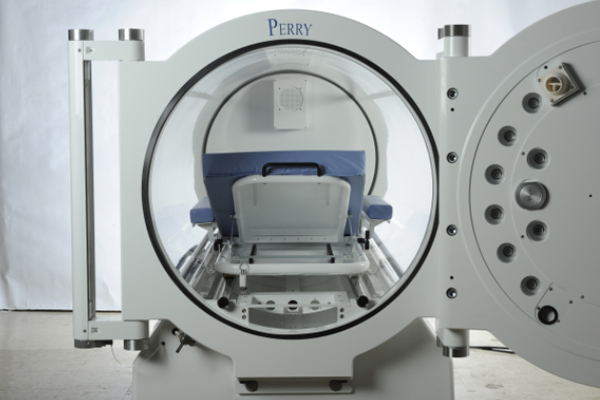Hyperbaric Oxygen Therapy for Diabetic Foot Ulcers

Diabetic Foot Wound Treatment And Limb Preservation
Saving Limbs and Lives
Approximately 25% of people with diabetes will develop foot ulcers in their lifetime. 130,000 people with diabetes will undergo an amputation. However, as many as 85% of potential amputations can be avoided when advanced modalities, such as hyperbaric oxygen therapy, or HBOT, are added to a treatment plan.
How HBOT Works as a Treatment for Diabetic Foot Ulcers & Hypoxemia
As the lungs take in large amounts of pressurized oxygen, the patient’s blood becomes more highly oxygenated. As the oxygen-rich blood circulates it carries more oxygen to the areas of concern, such as surgical sites or infected areas like diabetic foot ulcers. The treatments stimulate the release of substances known as growth factors and stem cells, which in turn promote the growth of new blood vessels and help foster healing.

What Are the Specific Benefits to Foot Ulcer Patients?
When hyperbaric oxygen therapy solutions are provided to patients with diabetic foot ulcers it is proven to improve your patients’ quality of life, reduce infections and tissue necrosis & Lower amputation rates, as many amputations caused by foot ulcers are preventable. HBOT is a proven therapy that continues to show great promise. HBOT can be utilized as a critical component in a comprehensive treatment plan to reduce, and even reverse, some of the negative effects of hypoxemia in diabetic foot ulcer patients. HBOT can significantly reduce the risk of amputation as well. Thousands of hospitals and healthcare practices are still not equipped to provide limb-saving treatments, so many patients with diabetes are not aware that these treatment options exist.

Louis Pilati MD
Kettering Medical Center Network
"Diabetic foot wounds are particularly challenging to heal because of the multitude of pathophysiological problems facing the diabetic patient. Diabetic patients develop sensorimotor and autonomic neuropathy, which leads to loss of sensation and plantar foot deformities.
For patients with Wagner Grade 3 or higher who have not shown significant improvement after 30 days of appropriate wound care it would be appropriate to initiate hyperbaric oxygen therapy to reduce the risk of major amputation. Patients who are Wagner Grade 3 who have had recent surgical debridement or partial foot amputation should be considered for hyperbaric oxygen therapy post-operative soon after surgery.
Use of hyperbaric oxygen in treating these patients has been shown to reduce the risk of major amputation. These patients are complicated and require a team approach. This should include vascular surgery, foot and ankle surgeons, and infectious disease specialists along with the wound care and hyperbaric medicine team."
Find A Wound Care Center Near You
Categories
Contributing Specialists

